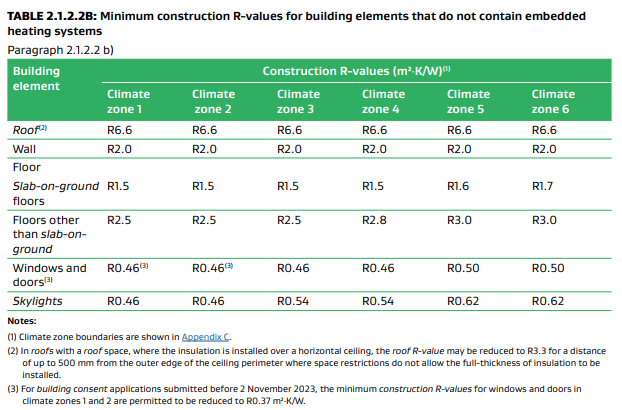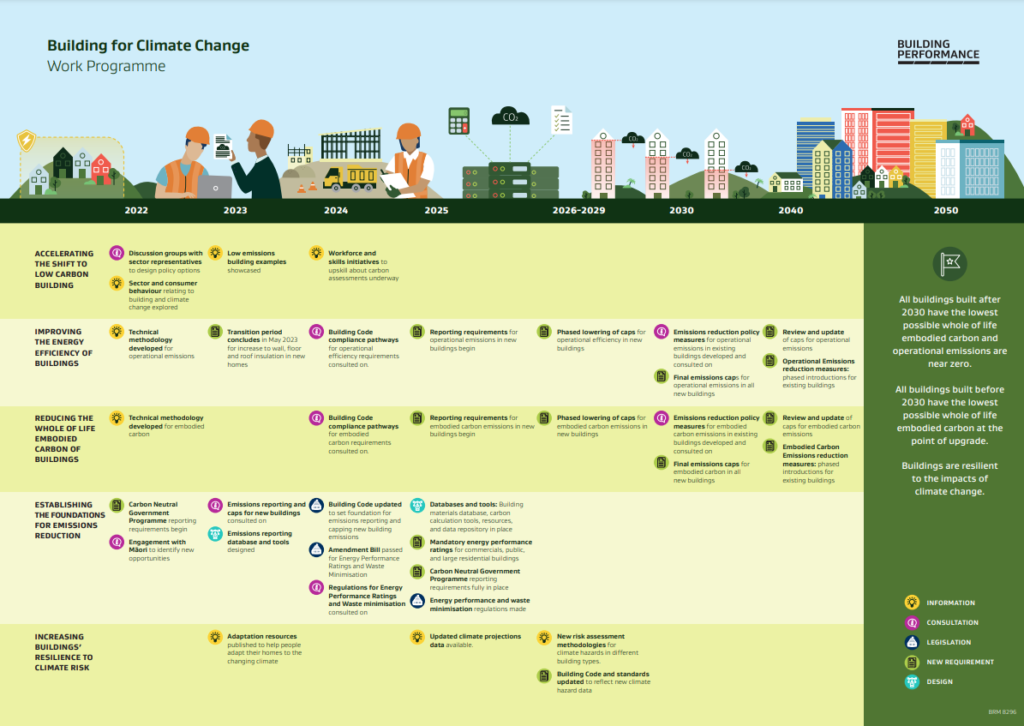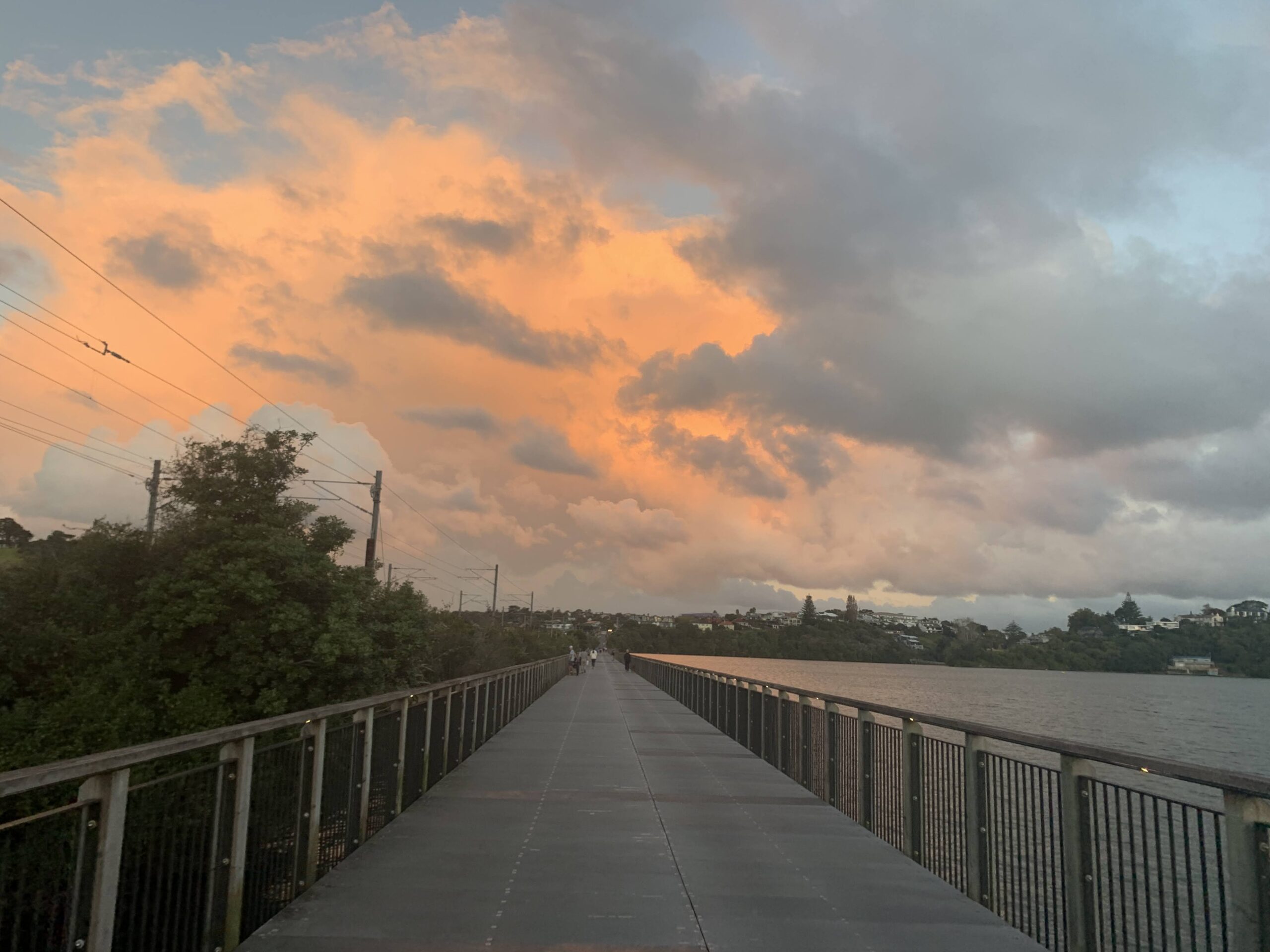Podcast: Play in new window | Download | Embed
This week, I attended a BRANZ seminar titled ‘Building for our Changing Climate’ in Tāmaki Makaurau Auckland. It’s encouraging to see rooms filled with designers, builders, product suppliers, building officials, and others interested enough in this critical topic to dedicate four hours of their week to it.
A key takeaway is that we’re not adequately prepared. Our current building code lacks sufficient standards to deal with our existing climate, let alone the forecast of ‘warmer and wetter’ conditions that will exacerbate the situation.
Getting Wet
The first part of the seminar was mainly about water and keeping it out of buildings. To do this, we need to consider where we put our houses. There are some useful resources for looking a flood and inundation zones around Aotearoa, and some tools for looking at the likely risk of sea level rise in certain areas.

Longer periods of warmer air temperatures are also likely to mean heavier rainstorm events (because warm air can hold more water). We need to remember all the lessons we learnt the hard way dealing with ‘leaky buildings’ and ensure our homes are capable of withstanding rain coming from all directions.

Managing Internal Moisture
Humidity is also a concern inside our homes. The second part of the session discussed internal moisture. We need significantly better ventilation to cope with moisture levels and the ability to warm our homes efficiently. Additionally, minimising thermal bridges is crucial, as these can lead to condensation issues.

Our building code is now fairly well-equipped to deal with keeping water out of buildings. More importantly, designers and building officials are so acutely aware of the issues because enough of their former colleagues have either been sued or know horror stories of people who have lost a lot because of a ‘leaky building’.
The areas for improvement include more consistent planning and avoidance of flood plains and inundation zones, and dealing with internal moisture.
Don’t Accept Acceptable
Compliance with particular clauses of the building code can be achieved through different pathways. Generally, there’s what’s called an ‘Acceptable Solution’ or there’s a ‘Verification Method’. Acceptable solutions are easy. They’re easy for designers and they’re easy for compliance officers. There is no calculation required. In the case of H1 Energy Efficiency, the Acceptable Solution simply involves looking up a table and checking the required insulation R-value for the appropriate climate zone. As long as the insulation is specified and installed to meet at least that R-value, the solution is deemed to comply.

Simplicity is attractive because very little thinking is required from the designer and it’s very quick and easy for the compliance officer to see if the R-value is equal to or higher than what is required.
Verification methods on the other hand require a little more work. In the case of H1, there are two options; calculation or modelling.
There are some good reasons for taking the time to do an energy model, or at the very least, a comparative calculation. The main reason, as far as insulation is concerned, is that by simply following the acceptable solution there is a risk of over-specifying roof insulation.
During question time at the seminar I attended, someone in the audience was interested in learning about BRANZ’s recent enthusiasm for ‘warm roofs’ (a topic for another article). The question was, “How do you get R 6.6 into a warm roof?” This stems from the fact that common warm roof assemblies are typically around 300 mm deep, far less than the height required for enough fibrous insulation to achieve R 6.6.
The simple answer to this question is that you don’t need to put R 6.6 in the roof. This assertion seems to stump a few designers and builders who are under the impression that the Acceptable Solution is the code. It’s not, and as I pointed out in a popular LinkedIn post recently, if you’re putting R 6.6 in a roof in Auckland, you’re either being lazy or you’re intentionally over-insulating your roof to compensate for inadequate insulation elsewhere. Neither of these reasons are ‘acceptable’ in my book.
Energy modelling is the best solution for optimising the insulation requirements around the whole building. It used to be something complicated and only deemed necessary on large, expensive commercial buildings, or large, expensive houses. It’s still a little complicated, but it’s much more accessible. There are great modelling tools available.
For standalone and terrace houses it’s hard to go past NZGBC’s Energy and Carbon Calculator for Homes (ECCHO), based on the Passive House Planning Package (PHPP). You will need to find a trained Homestar Designer with a current ECCHO licence, or you can become a Homestar Designer yourself.
The next best option is a calculation. There are several tools for this, many of them free, including this one. I’ve used this many times to show that R 6.6 is not required in a roof when the walls, floor and windows are adequate.
Calculating Carbon
This BRANZ seminar was focused on dealing with the impacts of climate change. We’re starting to grapple with the reality of what’s coming.
There was a brief mention of the proposal by MBIE under the previous government to implement a Building for Climate Change programme. Given that we’re already a third of the way through 2024, we’d need to get a move on if we’re going to be anywhere near on track for accounting for carbon in buildings and contributing to reducing the causes of climate change.
Oh well.

